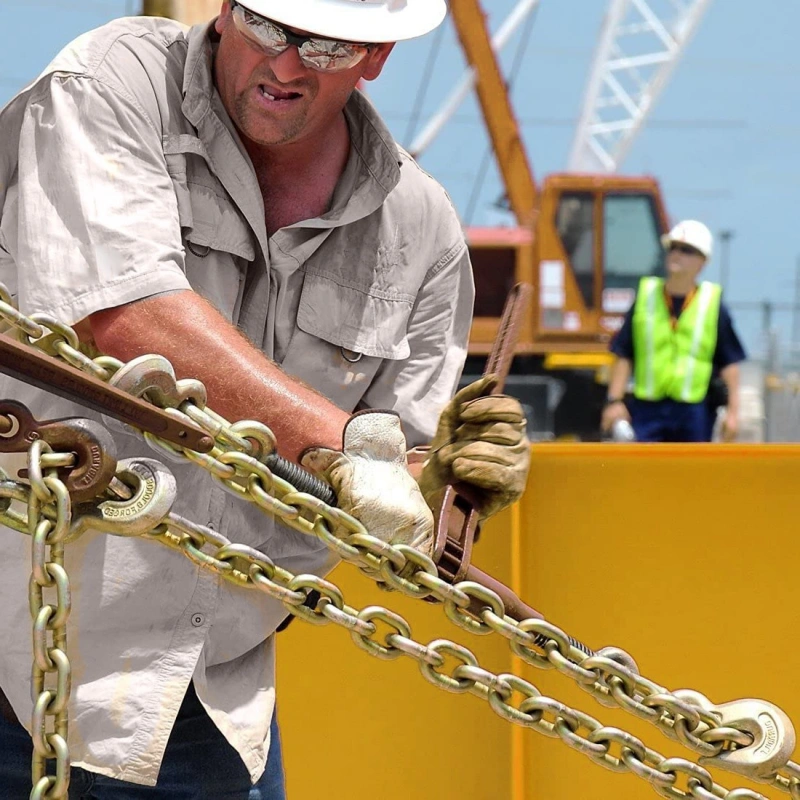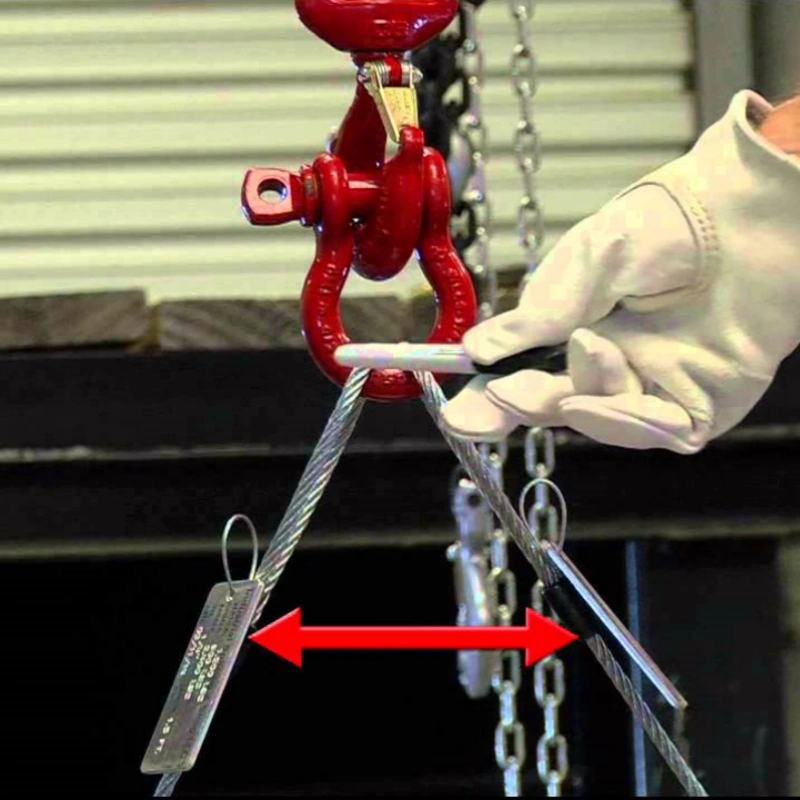If you want to know how to tighten a turnbuckle, just secure both ends and turn the body until you reach the right tension. Turnbuckles help you create strong, adjustable connections in all kinds of projects.
Powerful Machinery provides trusted, high-quality turnbuckles you can rely on for jobs in construction, marine, and even home DIY. Check out some of the most common uses:
| Application Area | Specific Uses |
|---|---|
| Construction | Securing scaffolding, structural supports, and tension rods |
| Marine | Rigging sails, securing deck equipment, and tensioning cables |
| Fencing and Agriculture | Tightening wire fences, trellises, and greenhouse structures |
| Industrial | Supporting conveyor lines, machinery, suspension systems |
| DIY and Home Projects | Hanging signs, outdoor lights, decorative tension cables |
Remember, always use the right tools and follow safety tips when working with turnbuckles.
Key Takeaways
- Gather the right tools before starting. Use a turnbuckle wrench, screwdriver, gloves, and safety glasses for a safe and effective process.
- Always inspect turnbuckles for wear and damage. Regular checks help ensure safety and reliability in your projects.
- Secure both ends of the turnbuckle before tightening. This step is crucial for achieving the right tension and preventing accidents.
- Make small adjustments when tightening. Avoid over-tightening to protect your setup from damage.
- Use locking mechanisms like nuts or cotter pins to keep your turnbuckle secure after adjustments. This prevents loosening over time.
Preparation
Tools Needed
Before you start tightening a turnbuckle, gather the right tools. You want to make sure you have everything ready so the job goes smoothly. Here’s what you’ll need:
- Turnbuckle wrench tool: This tool fits perfectly into the body of a Powerful Machinery turnbuckle. It helps you adjust tension with ease.
- Screwdriver or standard wrench: These tools work well for increasing tension or making small adjustments.
- Protective gloves: Gloves keep your hands safe from sharp wire ends and help you grip the tools better.
- Safety glasses: You don’t want debris or metal shavings getting in your eyes.
- Measuring tape: Use this to check cable length and make sure everything lines up before you tighten.
- Wire cutters: Sometimes you need to trim excess wire for a clean finish.
Tip: Always double-check that your tools match the size and type of turnbuckle you’re using. Powerful Machinery offers turnbuckles in different sizes and styles, so compatibility matters.
Safety Tips
Safety comes first when working with turnbuckles. You want to avoid injuries and make sure your setup lasts. Here are some key safety tips:
- Inspect your turnbuckles for wear, corrosion, or damage before you use them.
- Stick to the manufacturer’s Working Load Limit (WLL). Powerful Machinery lists these limits for every product.
- Make sure threads are fully engaged and aligned with the load. This keeps everything secure.
- Use lock nuts or safety pins to keep the turnbuckle from loosening over time.
- Avoid shock loads. Sudden jerks or heavy impacts can damage your setup.
- Choose turnbuckles made from materials that suit your environment. For marine use, AISI 316 stainless steel from Powerful Machinery resists corrosion.
Note: If you’re not sure about wire size or turnbuckle type, check the product specifications before you begin. Picking the right match means safer and more reliable results.
Identify Turnbuckle Types
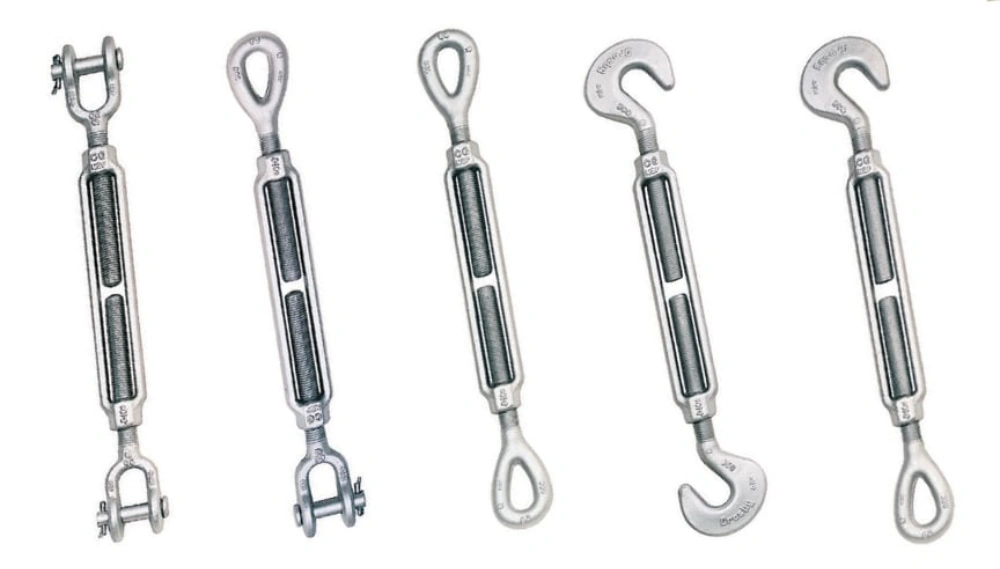
Powerful Machinery Turnbuckle Options
When you start working with turnbuckles, you’ll notice there are several options from Powerful Machinery. Each type has its own features and best uses. Let’s break down the main types of turnbuckles you’ll find:
| Type of Turnbuckle | Description |
|---|---|
| Jaw and Jaw | Two jaw-end fittings make it easy to connect to eye bolts or anchor points. |
| Jaw and Eye | Combines an eye fitting and a jaw fitting for versatile and reliable tensioning. |
| Eye and Eye | Two eye-end fittings work well for connections with shackles. |
| Hook and Eye | A hook and an eye allow for quick, temporary connections and rapid adjustments. |
| Hook and Hook | Two hooks let you make fast connections and disconnections, perfect for temporary setups. |
You might also see Jaw Swage and Toggle turnbuckles. Jaw Swage turnbuckles use a swaged end for permanent wire rope connections. Toggle turnbuckles have a pivoting toggle end for flexible tensioning, especially in marine or architectural projects.
Here’s a quick comparison to help you spot the differences:
| Turnbuckle Type | Description | Applications |
|---|---|---|
| Jaw and Jaw | Jaws on both ends for versatile attachment and equal tension adjustment. | Secure connections in rigging, marine, and construction. |
| Hook and Eye | Hook and eye ends are good for support but not for lifting. | Adjusting cable or rope length in fencing or temporary setups. |
Tip: Always check the end fittings before you buy. The right combination makes installation easier and safer.
Choosing the Right Product
Picking the right turnbuckle depends on your project. You want to match the turnbuckle to your needs for safety and performance. Here are some things to look for:
- Material quality matters. Stainless steel works best for marine or outdoor use.
- Load capacity keeps your setup safe. Check the product’s rating before you start.
- Size and adjustability help you get the right fit for your cables or wires.
- Reputation and experience count. Powerful Machinery has over 20 years in the industry.
- Compliance and certification give you peace of mind. Look for products that meet international standards.
You also want to think about the types of turnbuckles and their end fittings. Eye, jaw, and hook ends each offer different connection options. Some projects need mandatory removal from service standards, so check your local guidelines.
Turnbuckle applications range from marine rigging to architectural tensioning. If you’re working on a boat, choose corrosion-resistant stainless steel. For fencing or temporary setups, hook and eye turnbuckles make adjustments quick and easy.
Note: If you’re unsure, reach out to Powerful Machinery for advice. Their team can help you find the perfect match for your project.
How to Tighten a Turnbuckle?
Tightening a turnbuckle is easy when you follow the right steps. You want to make sure every connection is secure and every adjustment is precise. Let’s walk through the process together, using Powerful Machinery turnbuckles for reliable results.
Secure Both Ends
Start by preparing both ends of your turnbuckle. You need to make sure everything is set before you begin any turnbuckle adjustments. Here’s how you do it:
- Unscrew both end fittings until they are fully extended. This gives you enough room for installation.
- Attach one end of the turnbuckle to your anchor point. Make sure it’s locked in place and won’t slip.
- Extend the other end to your cable or wire line. Secure it tightly so there’s no movement.
- Once both ends are attached, you can tighten the turnbuckle evenly. This step sets you up for safe and effective adjustments.
Tip: Always check that the clevis pin or split ring is properly installed on Jaw Swage or Jaw and Jaw turnbuckles. These features keep your setup secure and prevent accidental release.
Adjust the Body
Now you’re ready for the main part—adjusting the turnbuckle body to apply tension and take up slack. You want to make sure every adjustment is smooth and controlled. Follow these steps for perfect turnbuckle adjustments:
- Hold the turnbuckle body with one hand. Use a wrench or screwdriver for extra grip if needed.
- Turn the body clockwise to tighten. This will apply tension to your cable or wire.
- Watch the threads as you turn. The upper thread usually turns right, and the lower thread turns left. Knowing this helps you avoid mistakes.
- Make small adjustments. Don’t back up the turnbuckle all the way. Stick to minor changes to keep everything safe.
- If you’re using a toggle turnbuckle, make sure the toggle end pivots freely. This helps with flexible tensioning in marine or architectural projects.
- For FastGun-style turnbuckles, hang the upper hook, adjust the threaded bolt, open the handle, hook the bottom, and snap the handle down. You should feel spring tension and see the O-ring spaced just below the body.
Note: Always secure the wire to prevent twisting. This is especially important for turnbuckles with stem ball fittings.
Here are some tools and safety tips for adjusting the turnbuckle:
- Wear gloves and safety glasses to protect your hands and eyes.
- Use heavy-duty turnbuckles rated for your load.
- Inspect the turnbuckle before each use.
- Lubricate the hardware to reduce friction and prevent corrosion.
- Use turnbuckle covers if you’re working outdoors.
Final Tension Check
You’re almost done! The last step is to check your tension and make sure you don’t over-tighten. Over-tightening can damage your setup, so you want to get it just right.
- Test the tension by gently pulling on the cable or wire. It should feel firm but not strained.
- Make final adjustments if needed. Turn the body a little at a time.
- Use a torque wrench for precise tightening. Powerful Machinery recommends these torque values for different bolt sizes:
| Bolt Size | Tightening Torque (ft lbs) |
|---|---|
| 1⁄4 | 2 |
| 5⁄16 | 3 |
| 3⁄8 | 6 |
| 7⁄16 | 10 |
| 1⁄2 | 15 |
| 9⁄16 | 21 |
| 5⁄8 | 29 |
| 3⁄4 | 52 |
| 7⁄8 | 84 |
| 1 | 125 |
| 11⁄8 | 178 |
| 11⁄4 | 251 |
| 13⁄8 | 329 |
| 11⁄2 | 436 |
| 13⁄4 | 688 |
- Double-check that the locking mechanism or safety pin is in place. This keeps your turnbuckle adjustments secure over time.
Callout: Avoid common mistakes like turning the body too far or forgetting which way the threads go. Always take up slack slowly and check your work as you go.
If you follow these steps, you’ll know exactly how to tighten a turnbuckle for any project. Powerful Machinery turnbuckles make every adjustment easy, safe, and reliable. Whether you’re working on a boat, a fence, or a structural support, you can trust your connections to hold strong.
How to Use a Turnbuckle Safely?
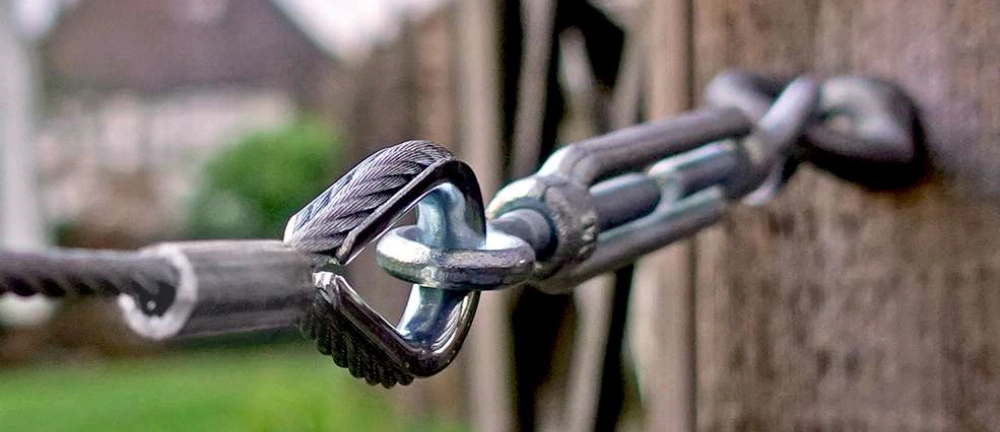
Locking and Maintenance
You want your setup to stay tight and reliable, so locking and maintaining your turnbuckle is key. After you finish tightening, you need to secure the turnbuckles to prevent them from loosening over time. Here are some simple ways to lock your Powerful Machinery turnbuckle:
- Add a nut to the right-hand threaded end and lock it down with a wrench. This keeps the adjustment from slipping.
- Use a slightly oversized ring-ding to stop the barrel from turning. It’s a quick fix that works well.
- Insert cotter pins or split rings. These small parts help hold everything in place after you adjust the tension.
Tip: Always check that locking hardware is in place before you walk away. A loose turnbuckle can cause problems down the line.
For long-lasting performance, regular maintenance is important, especially in marine environments. Here’s how to use a turnbuckle and keep it working smoothly:
- Inspect for corrosion and wear often. Look at the threads and fittings.
- Apply marine-grade grease to the threads. This helps prevent seizing and keeps movement smooth.
- Protect exposed parts with rigging tape. This shields your hardware from saltwater and harsh weather.
- Avoid over-tightening. Too much tension can strain your rigging.
- Monitor load and stress points with a tension gauge. This helps you catch problems early.
Inspection Tips
You want to make sure your turnbuckle stays safe and strong. The safe use of turnbuckles starts with regular inspections. Here’s what you should do:
- Check your turnbuckle at least once a year if you use it for normal service. If you work in tough conditions, inspect monthly or quarterly.
- Look for signs of corrosion, bent parts, or worn threads before each use.
- Do a quick visual check every day when the turnbuckle is in use.
- Disassemble and inspect every four years if you use your turnbuckle for heavy-duty jobs.
- Remove any turnbuckle from service if you see excessive corrosion, damage, or a 10% reduction in dimensions.
| Safety Guidelines | Description |
|---|---|
| Inspect Regularly | Check for corrosion, thread wear, bent components, or illegible markings. |
| Avoid Side Loading | Keep loads in line to prevent stress on the body or fittings. |
| Secure Against Unscrewing | Use jam nuts or lock wire for high-vibration applications. |
| Remove from Service | Discard turnbuckles with visible damage or excessive corrosion. |
| Consult Experts | Ask for advice in extreme temperatures or chemical environments. |
If you follow these steps, you’ll know how to use a turnbuckle safely and keep your rigging secure for years.
Powerful Machinery Product Tips
Stainless Steel Advantages
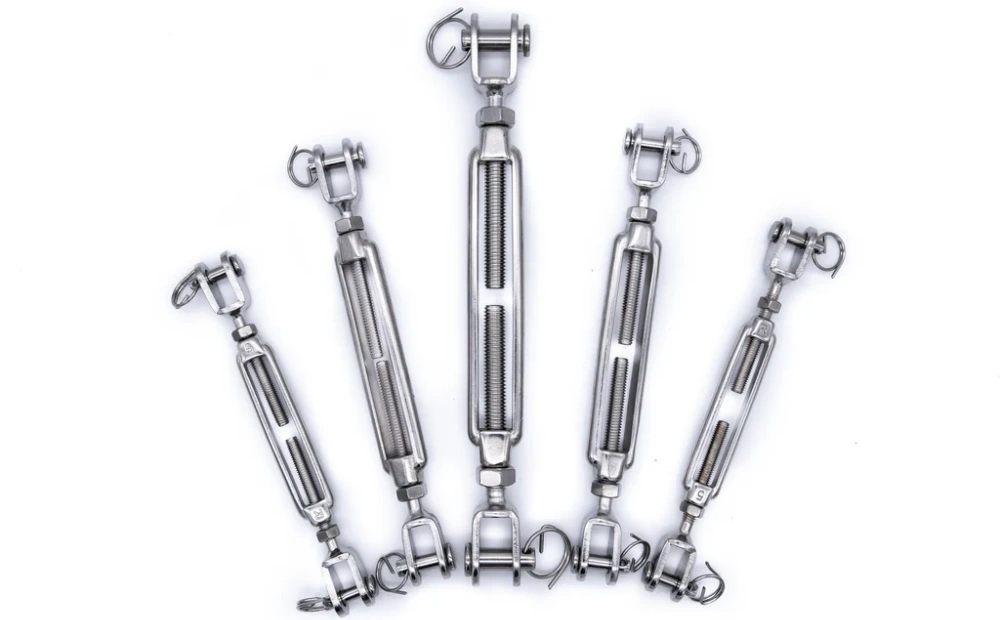
When you choose a Powerful Machinery turnbuckle, you get more than just a strong connector. You get the benefits of AISI 316 stainless steel. This material stands out for its durability and resistance to corrosion.
If you work in marine environments or anywhere with high chloride exposure, you want a turnbuckle that lasts.
- AISI 316 stainless steel resists rust and corrosion, even in salty or wet conditions.
- The polished surface gives your rigging a clean, professional look.
- Marine-grade construction means you can trust your setup in tough environments.
- You get a longer lifespan compared to other materials, so you spend less time on replacements.
Here’s a quick comparison:
| Material Type | Corrosion Resistance | Best Use Cases |
|---|---|---|
| 316 Stainless Steel | Excellent | Marine, outdoor, high chloride |
| 304 Stainless Steel | Good | General outdoor |
| Galvanized Steel | Moderate | Indoor, dry environments |
Powerful Machinery products meet strict international certifications like ISO9001, TUV Rheinland, and EURO CERT. You can feel confident that your turnbuckle will perform safely and reliably.
Tip: Always check for certification marks when you buy rigging hardware. Certified products help you avoid unexpected failures.
Custom Solutions
Every project is different. Sometimes you need a custom-engineered solution. Powerful Machinery offers tailored options for unique requirements. You can request special sizes, finishes, or materials to fit your job.
- Contact Powerful Machinery directly for bulk orders or special requests.
- Their team will help you design the right turnbuckle for your application.
- You get expert advice from professionals with over 20 years of experience.
If you need a large quantity or a specific design, reach out through the official website. The process is simple. Share your project details, and the team will guide you from consultation to delivery.
Note: Custom solutions save you time and money. You get exactly what you need for your rigging setup.
Conclusion
You’ve learned how to tighten a turnbuckle step by step. Powerful Machinery turnbuckles give you strength and reliability for every project. Stay safe by checking your gear and locking your adjustments.
- Always use the right tools.
- Inspect and maintain your turnbuckles.
- Choose certified products for peace of mind.
Bookmark this checklist so you can come back whenever you need a quick refresher. Ready to tackle your next rigging job? You’ve got this!
FAQ
How do you know if your turnbuckle is tight enough?
You should check the cable or wire by gently pulling it. If it feels firm and doesn’t sag, you’re good. Avoid over-tightening. Use a torque wrench for extra accuracy if you want.
Can you use any wrench to tighten a Powerful Machinery turnbuckle?
You can use a standard wrench or screwdriver for most adjustments. For best results, use a turnbuckle wrench that matches the size of your turnbuckle. This helps you get a secure grip.
What should you do if your turnbuckle loosens over time?
Add a lock nut, cotter pin, or split ring to secure the adjustment. Inspect your turnbuckle regularly. If you notice movement, tighten it again and check the locking hardware.
Is it safe to use turnbuckles outdoors or near water?
Yes! Powerful Machinery turnbuckles made from AISI 316 stainless steel resist rust and corrosion. They work great in marine, outdoor, or high-chloride environments. Always inspect for wear and clean them as needed.
How often should you inspect your turnbuckles?
Check your turnbuckles before each use. For heavy-duty or marine jobs, inspect monthly. Look for corrosion, bent parts, or worn threads. Replace any damaged hardware right away.

